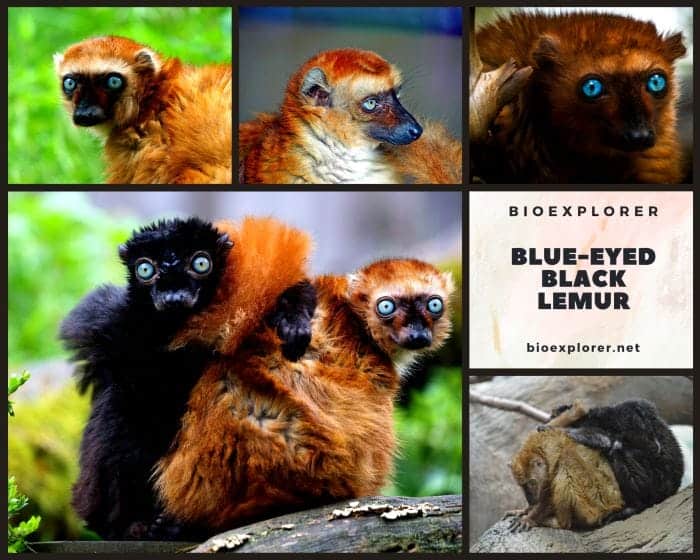
| Animalia | Mammalia | Primates | Lemuridae | Chordata | Eulemur flavifrons |
Deep in the lush tropical forests of northwestern Madagascar lives one of the world’s rarest and most enigmatic primates – the stunning blue-eyed black lemur (Eulemur flavifrons). As their name suggests, these mysterious Lemurs have dense black fur covering their entire body while piercing blue eyes peer out from a black face.
This rare lemur exists only in a tiny patch of primary rainforest straddling the Sahamalaza Peninsula and the Maevarano region. As few as 1000 mature individuals are estimated to remain. Their restricted range and gravely endangered status earn them the urgent attention of conservationists racing to protect Madagascar’s fragile lemur diversity.
This page illuminates the dazzling blue-eyed black lemur – from taxonomy and physical traits to habitat, behavior, predators, diet, and conservation status.


- Common Name: Blue-eyed Black Lemur
- Taxonomy Classification Year: 1867
- Monkey Size: 70 to 110 cm (27.56 to 43.31 in)
- Skin Color(s): Black or reddish-brown
- Habitat: Rainforest
- Diet: Herbivorous
- Native Countries: Madagascar
Blue-eyed Black Lemur Distribution
Table of Contents
Blue-eyed Black Lemur Characteristics
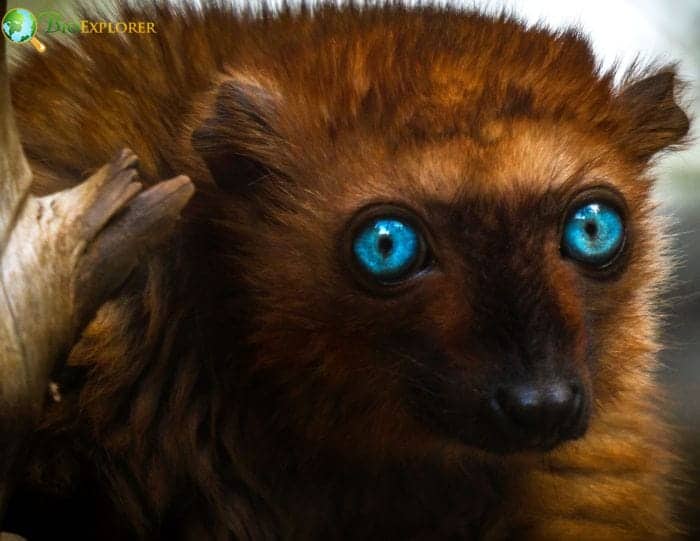
The blue-eyed black lemur[1], also called the sclater’s lemur, is a true lemur endemic to Madagascar.
- Like many species of the genus Eulemur, the blue-eyed black lemur is sexually bicolored. Males have solid black fur, with the hairs often tinged brown at the root.
- Female species are reddish brown with a lighter tan on the underside and around the face. They have gray or dark brown snouts, and the backs of their feet and hands are the same dark color.
- Both sexes have hair tufts that frame their faces from the neck to above the ears.
- The blue-eyed black lemur has 4 toes with an opposable pollex on each hand, and each hind foot has 4 toes with an opposable hallux.
- The tails of Blue-eyed black lemurs are longer than their body and are not prehensile.
As their name declares, blue-eyed black lemurs have signature brilliant blue eyes contrasting sharply against a black face. But the sexes do show distinct fur coloration:
- Males and females appear nearly identical in size, proportions, and tail bushiness. However, that striking blue-eyed facial contrast with the body reveals their gender.
Other physical features include:
- Pointed, dog-like muzzle
- Tall, round ears
- Long limbs designed for leaping.
- White whiskers accenting males.
- Adults reach 10-14 inches in head and body length, with a 16–20-inch tail.
- They weigh a petite 4 to 5 lbs fully grown.
![]()
Blue-eyed Black Lemur Habitat
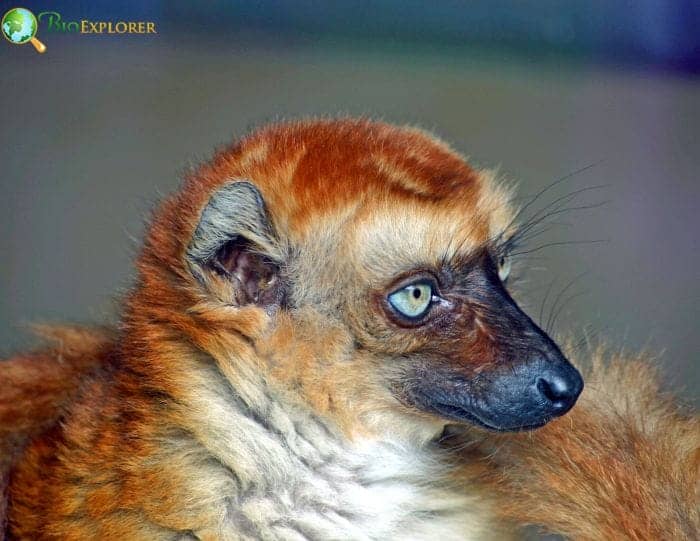
Blue-eyed black lemurs occupy just a tiny fragmented range in Northwestern Madagascar.
- Their distribution stretches from the Sahamalaza Peninsula through the Maevarano region, about 62 miles north to south.
- They exclusively inhabit lowland primary rainforests up to 2,950 ft elevation. As altitude increases, foliage density diminishes, reducing food availability and exposing lemurs to aerial predators more.
- Exact population strongholds pinpoint forest areas like Sahamalaza National Park and the Ankarafa Forest. But even their known range encompasses less than 4,000 square miles of suitable dense forest today.
Arboreal & Diurnal Rainforest Dwellers
- Blue-eyed black lemurs are highly active during daylight hours. They make their home among the upper canopy layer, some 30-90 feet high within emergent trees.
- Moving quadrupedally, these lemurs leap nimbly through the trees from branch to branch. They occasionally descend to cross forest gaps but otherwise avoid the ground, which lacks safety.
- Social groups average 5-6 members, but up to 15 share collective homes ranging from 100 acres. A hierarchy emerges within each group.
- They communicate constantly through scent marking and a remarkably wide vocal repertoire, including meows, purrs, howls, and screams.
![]()
What Do Blue-eyed Black Lemurs Eat?
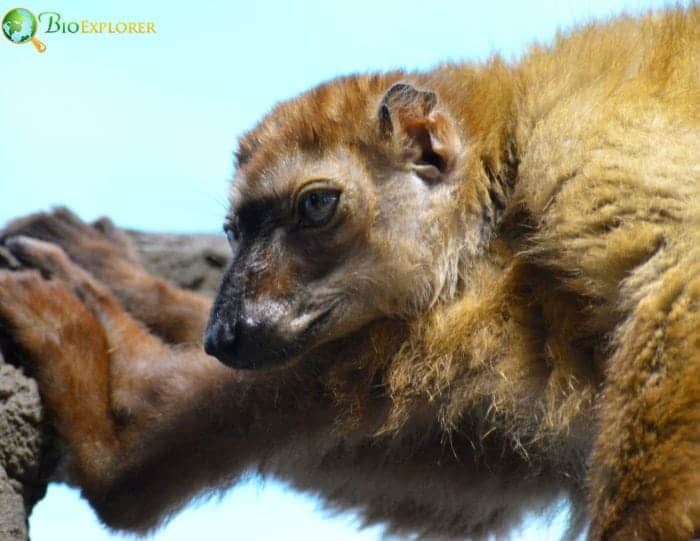
Blue-eyed black lemurs forage widely on a diverse, omnivorous diet to fuel their athletic tree-hopping.
They opportunistically feed on any seasonally available foods like:
- Fruits figs, nectar, ripe pods.
- Leaves & Bark
- Tree Sap
- Seeds & Nuts
- Herbs & fungi
- Spiders & Insects caterpillars, cicadas.
With acute color vision and smell, they efficiently locate ripe fruits and fresh young leaves across their home territory. But the scattered distribution of food forces them to continually forage.
![]()
What Eats the Blue-Eyed Black Lemur?
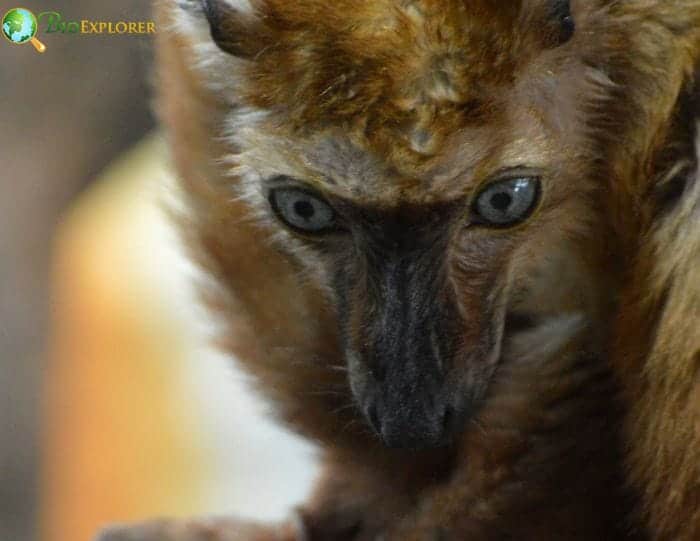
Despite their small size and restricted range, blue-eyed black lemurs still face substantial predators. Both aerial and terrestrial hunters seize adults, while infants are vulnerable even to smaller carnivores.
Known natural predators include:
- Hawks & Eagles pick off exposed lemurs.
- Fossas cat-like Malagasy predators[2].
- Snakes boa constrictors & venomous serpents.
- Small mammals such as civets or genets may grab unattended infants.
Additional Threats
- Humans may shoot them as crop pests or opportunistic hunting for bushmeat. While not the leading threat, incremental hunting losses compound habitat loss.
Infants are vulnerable even to smaller carnivorous mammals in the forest. Their bright blue eyes likely assist in remaining vigilant against threats approaching through dense foliage. But they are still prone to quiet ambush assaults from all sides.
Their bright blue eyes likely assist with vigilance against threats approaching through dense foliage. But they are still vulnerable to quiet ambush assaults.
![]()
Blue-eyed Black Lemur Reproduction Cycle
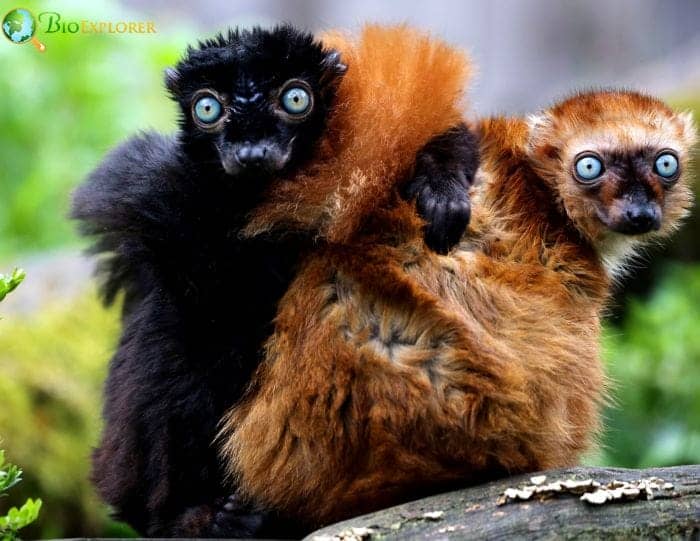
No strictly defined breeding season exists. But most mating and births occur May through July at the onset of the dry season when food sources become scarcer.
- After a gestation of 128 days, the female gives birth to just one infant. Newborns have full fur and open eyes but cling to their mother’s belly for the first month before transitioning to riding on her back.
- Weaning begins around 4 months, but supplementary feeding may continue over a year in the wild. Sexual maturity arrives between 2 and 3 years old, and lifespans may reach 18 years.
![]()
Blue-eyed Black Lemur Threatening Survival
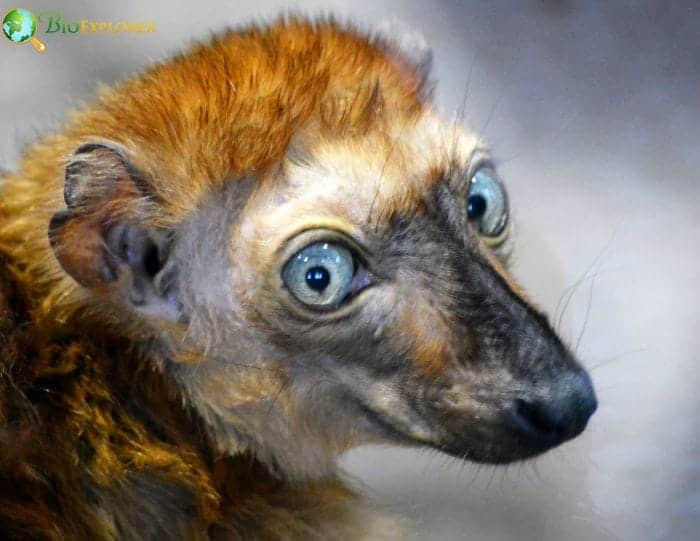
Classified as Critically Endangered by the IUCN Red List since 2008, only around 1000 blue-eyed black lemurs persist in the wild today.
- Habitat Loss: Rampant deforestation for timber, mining, agriculture, and charcoal production continues to fragment and eat away at their specialized forest niche. This poses the gravest threat to their limited range.
- Opportunistic Hunting: Additionally, they may face losses from opportunistic hunting, whether for bushmeat or in retaliation for crop raiding. While not the primary threat, even incremental hunting pressures further endanger small, declining populations.
- Conservation Reliant on Habitat: Urgent habitat conservation focusing on connecting remaining forest fragments offers the only hope for protecting this species on the brink.
Maintaining the viability of their rainforest ecosystem remains imperative for these uniquely captivating primates to endure in the coming decades.
![]()
Blue-eyed Black Lemur Facts
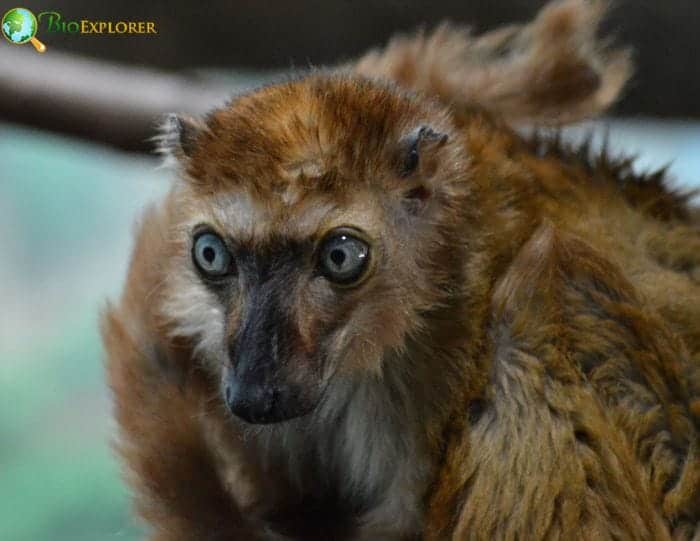
- As primates, they have strong hands with human-like palms that have a rubbery texture to give them a firm grip on tree branches.
- Both sexes have blue eyes, hence the name, and they are among the few primates other than humans to have blue eyes consistently. Eye color can range from a shocking electric blue to a bright sky blue to a softer grayish blue.
- Although the black lemur and the blue-eyed black lemur look alike, they can be distinguished by the species’ blue eyes and lack of distinctive ear tufts. In contrast, the black lemur has red-orange eyes and long, bristly hairs on the cheeks.
- As with most lemur species, females are dominant, and there are generally more males than females in any social group.
- They communicate through vocalizations, scent markings, and possibly some facial expressions.
![]()
Conclusion
The rare blue-eyed black lemurs showcase a distinctive primate specialized to a tiny niche of primary lowland rainforest in northwestern Madagascar. As litmus tests for the health of their delicate forest ecosystem, their endangered plight echoes the urgent state facing all wildlife relying on the region’s increasingly fractured forests.
Only comprehensive habitat protection corridors and reserves can hope to safeguard viable populations in the coming decades. Plus, initiating environmental education programs focused on the ecological benefits these species bring.
With luck and prompt action, conservationists can turn the tide for Madagascar’s mysterious blue-eyed black lemurs and countless other plants and animals relying on the same habitat for survival.










